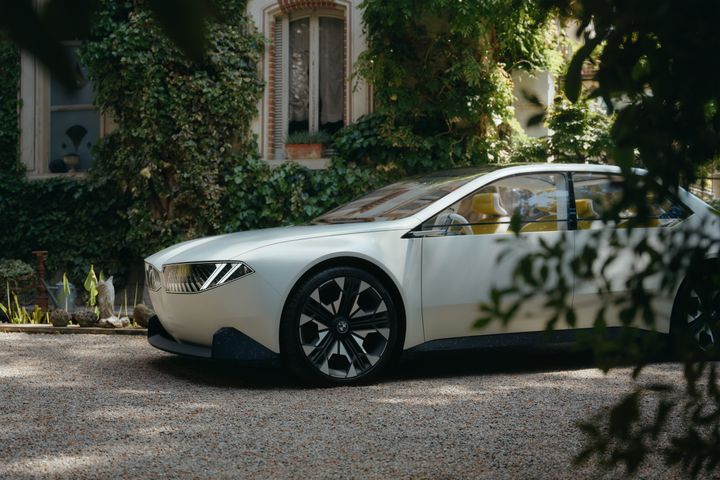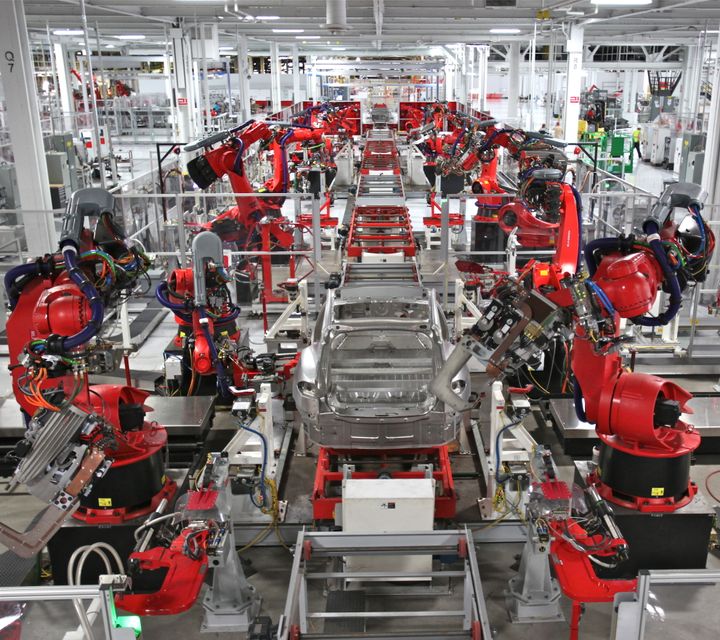Leading Electric Aviation Projects Bringing the Industry Closer to Zero-Emissions Future
The electric aviation movement is gaining traction as the industry faces mounting pressure to reduce harmful emissions. The global aviation industry is a major contributor to carbon emission, generating about 12% of CO2 emissions from all transport sources, compared to 74% from road transport, according to the Air Transport Action Group (ATAG). The European Commission has set out ambitious targets for the aviation industry including a 75% reduction in CO2 emissions per passenger kilometre and a 90% reduction in nitrous oxide emissions by 2050. With unabated growth in air transport, the aviation industry is working diligently to develop several promising new technologies and accessible modes of mass air transportation. Sustainable aviation technologies can significantly improve aircraft fuel efficiency and lower carbon dioxide emissions, while also reducing noise and operating costs. Major organisations including Boeing, JetBlue and NASA are responding to the trends and pouring hundreds of millions of dollars into electric aviation research and development.
Aviation industry pioneers have been dreaming about the possibility of electric flight for decades. In 1883, French military engineers Charles Renard and Arthur Constantin Krebs used an electric motor and batteries to power a steerable, hydrogen-filled dirigible known as La France. However, at that time battery technology was not advanced enough to power a full-sized aircraft. The first electric aircraft took flight for about 10 minutes when nickel-cadmium (NiCad) batteries were invented in the 1970s. By the 1980s, new energy-dense lithium-ion batteries were invented, which led to a resurgence in electric aircraft development. Today, there are more than 200 companies around the world investing in projects and start-ups to develop all kinds of electric aircraft, from retrofit hybrid-electric general aviation aircraft to long-range, commercial planes, to electric vertical take-off and landing (eVTOL) urban air taxis.
Here’s a rundown of some of the ambitious electric aviation start-ups and projects announced to date.
1. Bye Aerospace

Bye Aerospace is an aerospace engineering company that designs and builds advanced electric aircraft for general aviation, aerospace and defence, near-space and atmospheric satellite markets. The Colorado-based company flew its first all-electric test flight in 2018 from the Northern Colorado Regional Airport. Based on a carbon fibre composite competition sailplane, the aircraft has a 15 m (49.2 ft) wingspan and thin-film photovoltaic cells from SolAero Technologies. The long-endurance, low-cost commercial and government surveillance aircraft could be used for mapping, patrol, precision agriculture or search-and-rescue and has low infrared and acoustic signatures. In August 2019, the company announced a partnership with OXIS Energy to develop a Lithium-sulfur battery for use in the four-seat Sun Flyer 4. On August 21, 2019, Bye announced the sale of 26 aircraft to Los Angeles-based air taxi operator Quantum Air. At AirVenture in July 2021, George Bye of Bye Aerospace stated that the eFlyer 2 will be certified in late 2022 or early 2023, the eFlyer 4 certified in late 2023 or early 2024 and the eFlyer 800 certified in late 2025 or early 2026.
2. Pipistrel

Established in 1989, Pipistrel is a Slovenian electric aircraft manufacturer. The pioneering company has been around for more than 30 years and flew its first electric two-seater plane in 2007. The aircraft manufacturer launched Alpha Electro in 2014, the first FAA-certified electric aircraft flying in the United States. The electric aircraft weighs around 660 pounds designed specifically for training new pilots, and each Alpha Electro costs about USD 140,000. The Alpha Electro can fly for about one hour with a 20-minute reserve for roughly USD 5 and it takes about 45 minutes to fully charge its 220-pound 21-kWh battery. Pipistrel has produced 40 planes so far for customers in Europe, the United States and Australia. The company has also supplied the U.S. Air Force with four Alpha Electros for its Aviation Character Education (ACE) program.
3. Eviation

Eviation unveiled its battery-powered, all-electric nine-seater aircraft - Alice at the 53rd International Paris Air Show. The first-of-its-kind zero-emission plane can fly 650 miles at 10,000 feet with a cruising speed of 276 miles per hour. The estimated per-hour operating cost of the e-aircraft is USD 165 or 7 cents per available seat mile. The plane weighs around 14,000 pounds and the 900-kilowatt-hour lithium-ion battery can fully charge within two to three hours. In total, 164 suppliers including Siemens, Honeywell, magniX, etc. from 21 countries worked on the Alice project. The German postal services giant, DHL Express placed an order for 12 Alice electric aircraft from Eviation in August this year. As per DHL, the Deutsche Post DHL Group subsidiary is the first company in the world to place an order for the zero-emission aircraft from Eviation. With the electric aircraft, DHL Express plans to build the first emission-free air freight network. The company expects the aircraft will attain all necessary certifications and will be ready to go into operation in 2024.
4. NASA

US space agency NASA is developing an electric aircraft called X-57 Maxwell. The space agency's primary goal for X-57 is to aid in developing certification standards and protocols for emerging electric aircraft markets as technology allows for more advanced designs. NASA claims the X-57 Maxwell will produce a “500% increase in high-speed cruise efficiency, zero in-flight carbon emissions, and a flight that is much quieter for the community on the ground”. The twin-engine propeller aircraft will use 14 electric motors along with the wings and be powered solely by rechargeable lithium-ion batteries. The X-57 Maxwell is currently in its first configuration as an electric aircraft, labelled Mod 2, and while its battery control system nears completion it will use a battery support system for this phase of testing, drawing power from a large and high-voltage power supply.
5. Joby Aviation

Joby Aviation, founded in 2009, is a Californian start-up working on an electric flying taxi programme. The company aims to create an eVTOL (electric vertical take-off and landing) craft that is capable of transporting four passengers to their destination at 200mph or 322kmph with zero emissions. The electric aircraft will have a flight speed twice that of a helicopter, which it will resemble in appearance. It will have five seats and be capable of flying 150 miles or 240km on a single charge. Joby Aviation hopes to reduce costs by minimising fuel and operating expenses, which it argues are a “significant component” of air travel costs. The company, which has begun full flight tests of production prototypes, is also working on an app that will enable passengers to book a flight on demand.
6. Lilium Jet

Lilium is a Germany based start-up co-founded by four aerospace engineers and product designers - Daniel Wiegand, Sebastian Born, Patrick Nathen and Matthias Meiner in 2015. Instead of replacing the combustion engine with electric engines, the company is driving innovation and intends to build an entirely new aircraft concept from scratch. Lilium has spent the last few years developing electric jet prototypes of a 5-seat and 7-seat electric jet that have the ability for vertical take-off and landing. The 7-seat jet was released this year with a projected cruise speed of 175 mph at 10,000 feet and a range of 155+ miles. Lilium plans to manufacture as well as operate the Lilium Jet as a point-to-point on-demand regional air taxi service. The company expects to be fully operational in various cities around the world by 2025, although trial services will start earlier than this in several locations.
7. Rolls-Royce

Rolls-Royce’s all-electric Spirit of Innovation aircraft took its first flight from the UK Ministry of Defence’s Boscombe Down site on 15th September. With a 400kW electric powertrain, the company aims to set a new world speed record for electrically powered aircraft by exceeding 300 miles per hour. The electric aircraft is being developed as part of a UK government-backed programme called Accel (Accelerating the Electrification of Flight) with partners including Yasa, the UK-based developer of axial-flux electric motors and controls and the aviation battery specialist, Electroflight.The all-electric Spirit of Innovation is powered by the most power-dense and advanced battery pack ever assembled for an aircraft. Currently undergoing testing on the company’s ionBird test airframe, the aircraft features 6,000 battery cells, the pack produces enough energy to generate 750 kW or 1,005 hp and fly 200 miles on a single charge. Rolls-Royce is also working with airframer Tecnam and Widerøe, the largest regional airline in Scandinavia, to deliver an all-electric passenger aircraft for the commuter market, which is planned to be ready for revenue service in 2026.
8. Archer

Archer Aviation is a Santa Clara-based aviation startup that builds electric vertical takeoff and landing (eVTOL) aircraft. It uses an air data system, radar and laser altimeters, quad redundant flight computers, weight on wheel sensors, and downward-facing cameras that allow vehicles to take off and land autonomously. The company unveiled its first electric vertical take-off and landing (eVTOL) aircraft - Maker, in Los Angeles in June 2021. The electric aircraft is manufactured from lightweight carbon fibre composites and can carry two passengers within a range of 60miles or 96.5km at a top speed of 150mph or 241kmph while generating minimal noise. The fully electric aircraft is powered by a 75kWh Meru lithium-ion battery system, delivering an optimal balance of high power and energy for achieving maximum range. It is also equipped with two sensors, a radar altimeter and a laser altimeter that work in conjunction with the inertial navigation system, air data systems and weight-on-wheels sensors to perform the critical function of identifying the transition from in-air to on-ground. The commercial launch of the aircraft is expected by 2024.
The wave of electrification in the aviation industry is generating opportunities to expand technology, increase mobility in dense communities, and produce cleaner, more sustainable modes of transportation. Hydraulic and pneumatic systems are slowly transitioning to electric-based systems, enabling the creation of aircraft that are more efficient and, therefore, easier to maintain. With the right investment and breakthroughs, the electric aviation industry has the potential to significantly cut emissions, reduce noise and also potentially provide a cheaper transportation alternative.




 Industry Inscript is a subsidiary of Valiant and Company Ltd.
Industry Inscript is a subsidiary of Valiant and Company Ltd.
Comments ()